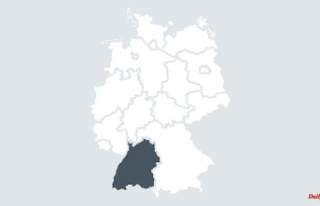Renewable energies are used for heating in more and more newly built residential buildings. For the first time, the heat pump is the most frequently installed of all types of heating. Although the proportion of gas heating systems continued to fall last year, it is still high.
Heat pumps, solar thermal energy, biogas: Renewable energies are being used for heating in more and more new residential buildings in Germany. More than two thirds (70.7 percent) of the residential buildings completed in 2021 will be heated entirely or partially with renewable energies, as reported by the Federal Statistical Office. In 2020 the proportion was still 68.8 percent, in 2015 it was 61.5 percent.
Most of these are heat pumps: They are used as primary heating in 50.6 percent of new buildings (2015: 31.4 percent). This is the first time that heat pumps have been used as the primary heating energy source in more than half of the new residential buildings.
From 2020 to 2021 alone, the proportion rose from 45.8 to 50.6 percent. In 2015 it was less than a third. Heat pumps are mainly used in detached and semi-detached houses: A heat pump was installed in 53.9 percent of all detached and semi-detached houses completed in 2021. The proportion in multi-family houses (30.6 percent) was significantly lower, 21.4 percent of which are heated with district heating and 39.1 percent with natural gas.
The other renewable energies - which include solar thermal, pellet heating, wood-burning stoves, biogas/biomethane and other biomass - are used together as the primary heating energy source in 4.5 percent of all new residential buildings. Oil, gas and electricity are conventional energy sources.
As the second most important primary energy source, the conventional carrier natural gas was used in 34.3 percent of the new buildings. The share of gas heating has decreased continuously in recent years. In 2020 it was still 39.0 percent and in 2015 it was 51.5 percent.
Oil heating was only installed in 611 new residential buildings nationwide in 2021, which corresponded to a share of 0.6 percent. District heating was used primarily in multi-family houses, but this cannot be clearly assigned to conventional or renewable energy sources in the statistics. 8.0 percent of the new residential buildings were primarily heated with district heating. Solar thermal and wood were the preferred sources of supplementary or secondary energy.
Switching heating technology to renewable energies is considered the key to reducing CO2 emissions from living. The conversion of the existing building represents a far greater challenge than the initial furnishing of new buildings.












